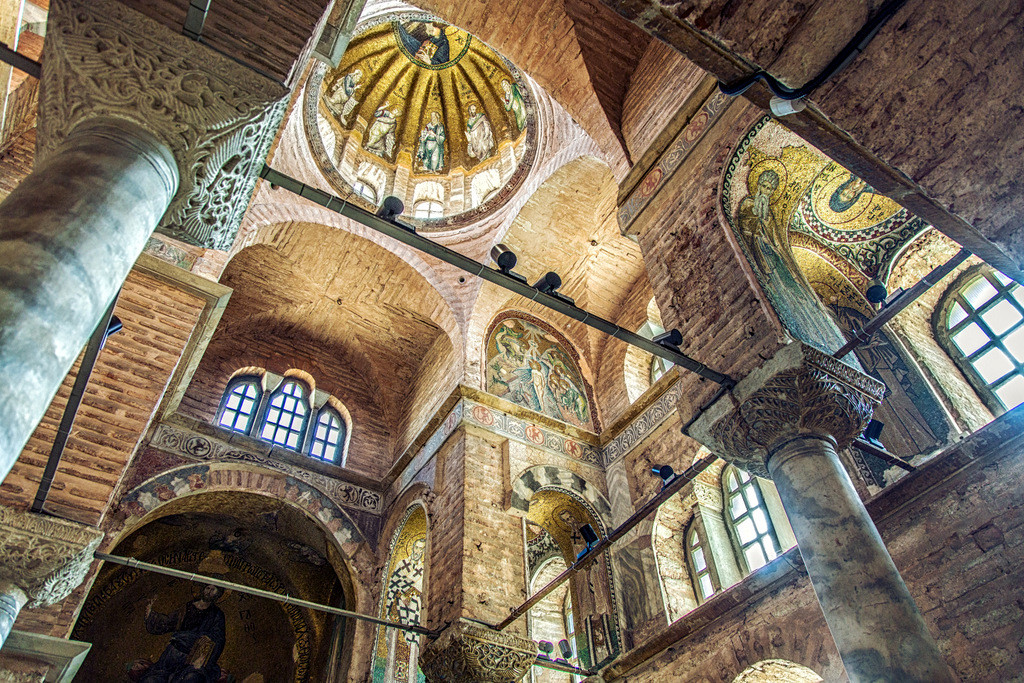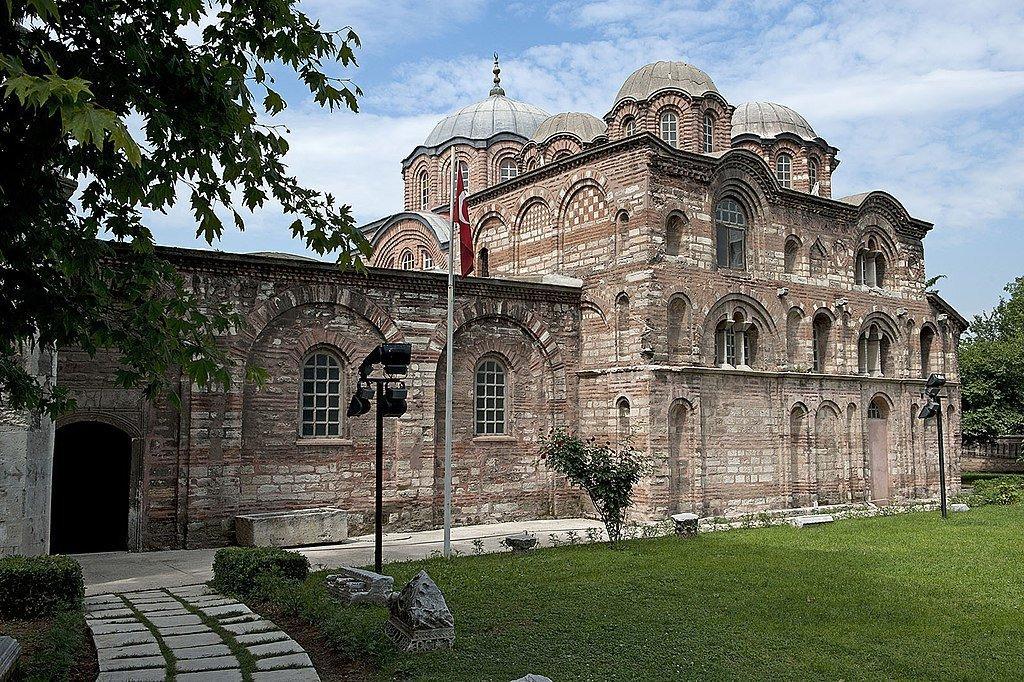The Monastery of the Theotokos Pammakaristos was one of the most important works of the late Byzantine period in Istanbul. Pammakaristos Church, the only structure remaining from the monastery complex, serves as the Fethiye Museum today.
Since there is a beach resort in Turkey called “Fethiye”, the name of the museum can sometimes cause confusion. However, it should be noted that Fethiye Museum is located in Istanbul. Fethiye Museum has the most beautiful Byzantine mosaic collection in Istanbul, together with Hagia Sophia and Chora Church.
I would like to tell you a little bit about the history of the church that hosts the Fethiye Museum. Because Pammakaristos Church gives us important clues about medieval Byzantine architecture. Let’s rewind a little and start with the history of Christianity in order to properly explain the history of the church.
IMPORTANT NOTICE: Since 2018, Fethiye Museum (aka Pammakaristos Church) has been closed for restoration and opening date is still not certain. This information is last updated on May 5, 2024.
About the History of Christianity
Arising of Christian doctrine coincides with Emperor Augustus reign. Born around Jerusalem (Bethlehem), Jesus offered his teaching to a small group gathered around him and he was crucified in his 30s inequitably.
Christian doctrine was spread throughout the world by his apostles whom Jesus trained as his students. They tried hard to spread his legacy to significant cities such as Rome, Ephesus, Antioch and Alexandria. But their effort was blocked by state authority of Roman Empire who regarded Christianity as a major threat to its own existence.
After having been exposed to oppression for ages, Christians got lucky in Emperor Constantine period. Constantine had a dream in which it was heralded that they could win the war if his soldiers would draw cross signs on their shields before the Battle of the Milvian Bridge. He won the war and started to lean towards Christianity. Then, he allowed Christians to practice their religions freely in Roman Empire with the Edict of Milan, 315 A.D.
Until Emperor Constantine’s era, Rome predominantly believed in polytheistic religion and Christianity was an underground organization; it lacked official institutions and clergy. There were two things executed by Constantine the Great in 320’s that had an impact on Christian history: he announced Constantinople as the new capital of Roman Empire, and he convoked First Council of Nicaea to determine the principals of Christianity.
Principles of church structure were discussed in detail and it was determined that there would be 5 main Christianity Centers: Rome, Constantinople, Antioch, Jerusalem and Alexandria. They appointed a bishop to each of these important cities of Ancient Time. While the bishop in Rome was generally referred to as the “Pope”, the bishop of Constantinople was the “Patriarch”. Dissidence between two bishops marked the history of Christianity in Medieval times.
At the height of the Byzantine Empire, the authority of the Patriarch of Constantinople was strong enough to rival the Pope in Rome. Pammakaristos Church is one of the churches that hosted the Patriarchate, which was the leader of the Eastern Christians.
The Monastery of the Theotokos Pammakaristos
The Ecumenical Patriarchate of Constantinople has been a spiritual center for Orthodox Christians for ages. Although the Eastern Orthodox Church is split into autocephalous sub-groups such as Church of Greece, Bulgaria, Russia and Ukraine today, Ecumenical Patriarch of Constantinople still holds a special place of honor within Orthodoxy and enjoys the status of primus inter pares (first among equals).
After Hagia Sophia was converted into mosque in 1453, the Ecumenical Patriarchate moved into the Church of the Holy Apostles. It stayed there for a couple of years and was moved into the The Monastery of the Theotokos Pammakaristos, known as Fethiye Museum today. After Pammakaristos Church was converted into mosque by Sultan Murad III and named as Fethiye Mosque, Patriarchate was moved to its final place, Church of St. George.
History of Pammakaristos Church
The history of Pammakaristos Church goes back to the late Byzantine period. During this period, many small churches were built in Constantinople by noble families.
Members of the Palaiologos dynasty, like the Komnenos in the past, competed with each other to build religious structures and monasteries. Pammakaristos Monastery, which was originally a church dating back to the Komnenos period, was greatly damaged during the Fourth Crusade. Michael Tarchaneiotes, a nobleman of the Palaiologos period, repaired this church.
After Michael’s death, his wife Maria Doukaina built a burial chapel (Parekklesion) to the south of the church in honor of her husband. Adorned with the most beautiful works of art of the period, Pammakaristos is home to wonderful Byzantine mosaics.
Pammakaristos was used as the Patriarchate building between 1455 and 1586. It was converted into a mosque during the reign of Sultan Murad III (1574-95) and began to be called Fethiye Mosque. Parecclesion section of the church is open to visitors as “Fethiye Museum” today.
If you would like more information about Byzantine churches in Istanbul, you can also take a look at this article that I published on this website.
Fethiye Museum (Istanbul) Entrance Fee 2024
Fethiye Museum entrance fee is 60 Turkish Liras as of 2024. You can use Istanbul Museum Pass to enter former Pammakaristos Church. The information on the ticket price was last updated on May 5, 2024 (The museum is currently closed due to restoration).
Fethiye Museum (Istanbul) Visiting Hours 2024
Fethiye Museum opening hours are between 09:00 in the morning and 17:00 in the evening. Please also note that the Fethiye Museum is closed on weekends. Information on visiting hours was last updated on May 5, 2024 (The museum is currently closed due to restoration).
Visiting times of museums in Istanbul may change due to events and renovations. Before going to the museum, I recommend you to visit the official website of the Museum and review the latest situation.
The Museum is Currently Under Restoration
Please note that the Fethiye Museum has been closed to visitors since 2018 for restoration. You can follow the current status of the museum from the official website that I shared in the upper lines. This blog post will be updated when the museum reopens.
The museum is still closed as of May 2024, which is the last date I updated this article. Fethiye Museum in Istanbul (former Church of Pammakaristos) is expected to open in 2024.
Written by Serhat Engul



Is it possible to visit the upper galleries of Santa Sofia?
Hello Matias, yes, the upper floor galleries of Hagia Sophia have been opened to tourists as of January 15, 2024.